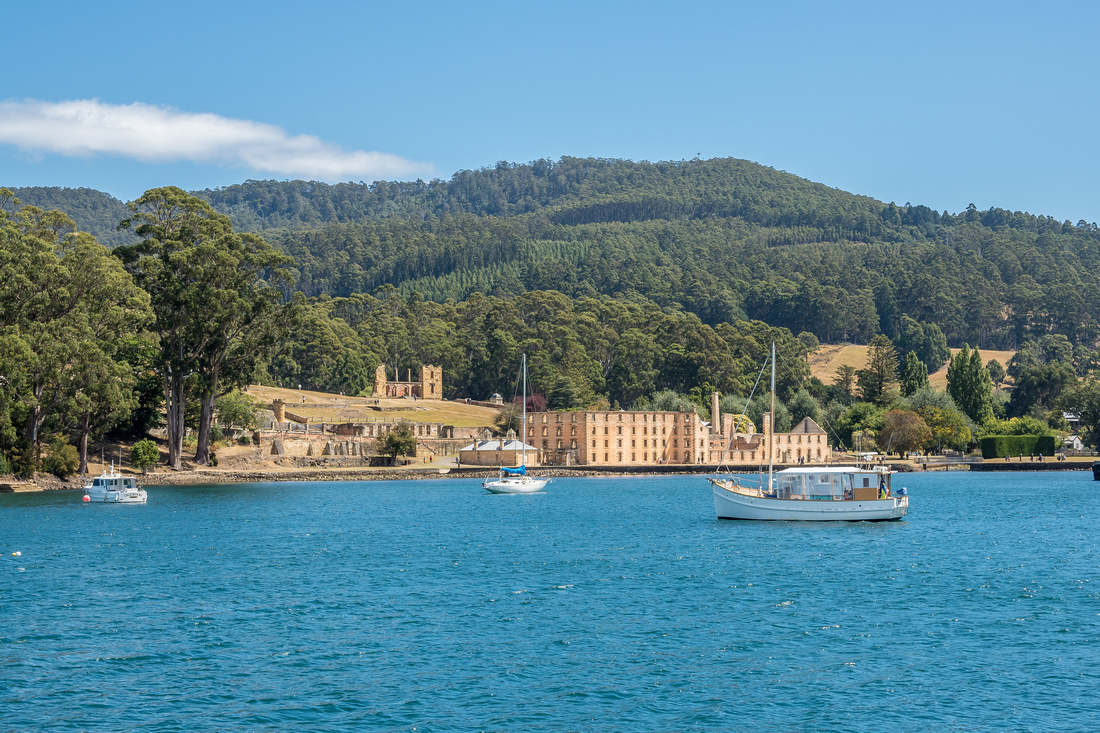Port Arthur

 Port Arthur is a small town and former convict settlement on the Tasman Peninsula. It is one of Australia's most significant heritage areas and an open-air museum. Port Arthur is officially Tasmania's top tourist attraction. It is located approximately 60 kilometres south east of Hobart. In 1996 it was also the scene of the worst mass murder event in post-colonial Australian history.
Port Arthur is a small town and former convict settlement on the Tasman Peninsula. It is one of Australia's most significant heritage areas and an open-air museum. Port Arthur is officially Tasmania's top tourist attraction. It is located approximately 60 kilometres south east of Hobart. In 1996 it was also the scene of the worst mass murder event in post-colonial Australian history.
Port Arthur was named after George Arthur, the Lieutenant Governor of Van Diemens Land. The settlement started as a timber station in 1830, but it is best known for being a penal colony.
From 1833, until 1853, it was the destination for the hardest of convicted British criminals, those who were secondary offenders having re-offended after their arrival in Australia. Rebellious personalities from other convict stations were also sent here, a quite undesirable punishment. The prison was completed in 1853 but then extended in 1855.
The peninsula on which Port Arthur is located is a naturally secure site by being surrounded by water (rumoured by the administration to be shark-infested). The 30m wide isthmus of Eaglehawk Neck that was the only connection to the mainland was fenced and guarded by soldiers, man traps and half-starved dogs.
Contact between visiting seamen and prisoners was barred. Ships had to check in their sails and oars upon landing to prevent any escapes. However, many attempts were made, and some were successful. Boats were seized and rowed or sailed long distances to freedom.
Port Arthur was sold as an inescapable prison, much like the later Alcatraz Island in the United States. Some prisoners were not discouraged by this, and tried to escape. Martin Cash successfully escaped along with two others. One of the most infamous incidents, simply for its bizarreness, was the escape attempt of one George "Billy" Hunt. Hunt disguised himself using a kangaroo hide and tried to flee across the Neck, but the half-starved guards on duty tried to shoot him to supplement their meager rations. When he noticed them sighting him up, Hunt threw off his disguise and surrendered, receiving 150 lashes.
Before Port Arthur was abandoned as a Prison in 1877. After the Prison closed much of the property was put up for auction. However, most of the property was not sold until 1889. By this time, the area had become increasing popular and the prison buildings were in decay. As the Hobart Mercury proclaimed, "the buildings themselves are fast going to decay, and in a few years will attract nobody; for they will be ruins without anything to make them worthy of respect, or even remembrance.
The decay was seen as something positive as the Tasmanian population wished to distance themselves from the dark image of Port Arthur. Those who bought Port Arthur property began tearing down the buildings, the destruction was furthered by the fires of 1895 and 1897 which destroyed the old prison house, and earth tremors. In place of the Prison Port Arthur, the town of Carnarvon was born. The town was named after the British Secretary of State and the population was said to be "refined and intellectual." The town brought in many visitors as they encouraged boating, fishing and shooting in the natural beauty of the Peninsula. They again wished to remove the negative connotation attached to the area.
In 1927 tourism had grown to the point where the area's name was reverted to Port Arthur. 1916 saw the establishment of the Scenery Preservation Board which took the management of Port Arthur out of the hands of the locals. By the 1970s the National Parks and Wildlife Service began managing the site. In 1979 funding was received to preserve the site as a tourist destination, due to its historical significance.
On 28 April 1996, the Port Arthur historic site was the location of a tragic killing spree. The subsequently convicted perpetrator murdered thirty-five people and wounded twenty five more before being captured. The killing spree led to a national restriction on high capacity semi-automatic shotguns and rifles. The perpetrator Martin Bryant is currently serving thirty-five life sentences plus 1,035 years without parole in the psychiatric wing of Risdon Prison in Hobart, Tasmania.
12 years has elapsed since Heather and I had visited Port Arthur with our girls. I found it particularly sad on this occasion, as we inspected the memorial garden and pond which commemorates the victims of the 1996 massacre. I remember when we visited in 2005, even though this was nine years after the event, there were signs in the cafeteria requesting that the public refrain from asking questions as staff members who had witnessed this horrible event still worked there. This is such a tragic place on so many levels!